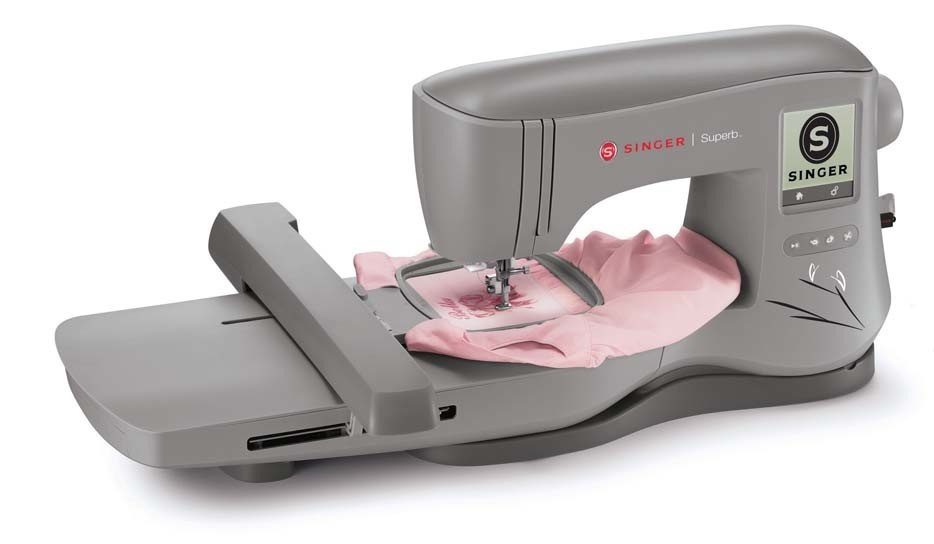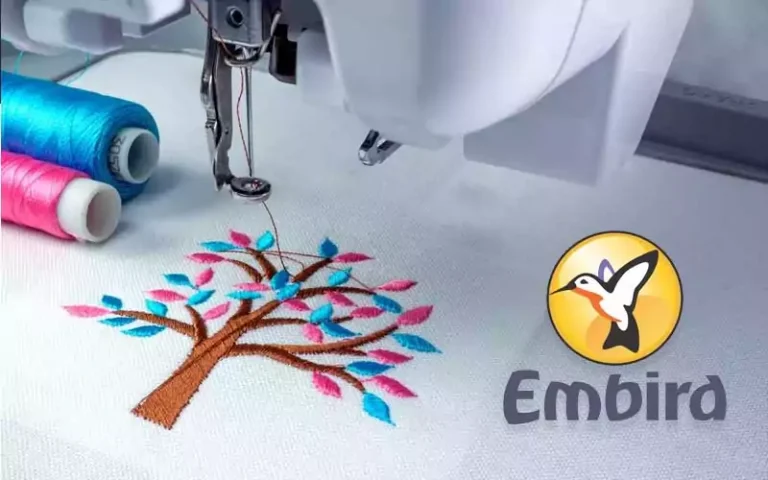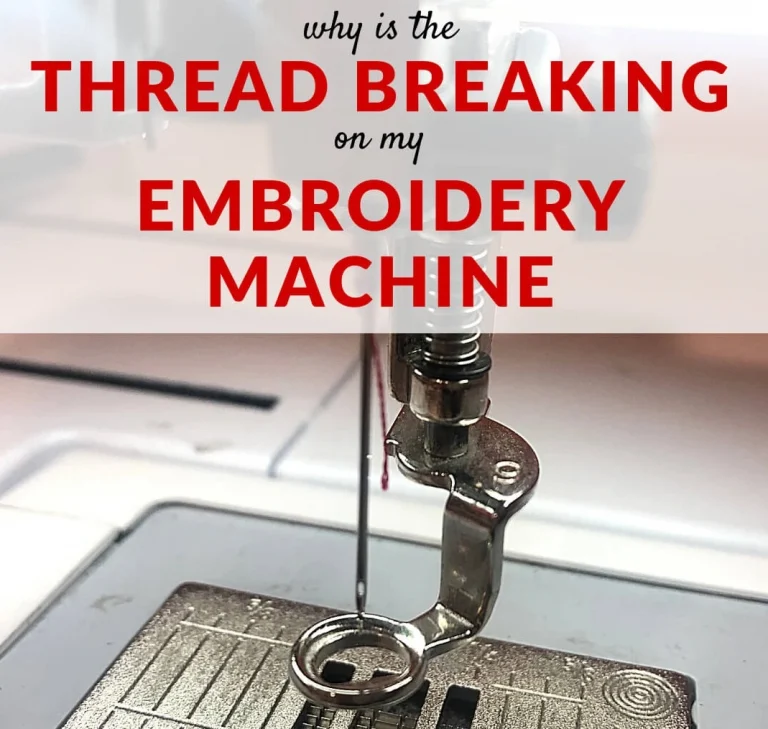Although there are many embroidery supplies and notions available, the one common consideration to be given to any product must be, “Is this supply of the highest quality?” You’re investing your thoughts, creativity, time and talent into a project, so the end result should stand the test of time. Proven products may cost a few pennies more than other products, but their high standards in manufacturing make the purchase well worth it.
Education also removes some of the mystery from choosing which supplies are truly necessary, particularly when it comes to stabilizer, thread and needles. Reading articles like
this one is a good start. However, a hands-on class provides a chance to listen to an instructor’s thoughts, use their recommend supplies (usually found in the class kit), and potentially learn a new method of completing a specific technique. Often times in machine embroidery, there’s more than one way to achieve the same goal.
STABILIZER
For necessary supplies, stabilizer, along with the fabric, is the foundation of any embroidery design. Although there appears to be an overabundance of different products on the market, once broken down into specific types, the differences begin to make sense.
• Tear-away: Tear-away stabilizer gently tears from the design perimeter.
• Wash-away: Wash-away stabilizer disintegrates over a period of time from repeated washing.
• Cut-away: Cut-away stabilizer must be trimmed from the design perimeter.
As with most things in life, there are advantages for each stabilizer type, off-set by what some might consider disadvantages.
For instance, while easily torn from the wrong side of a fairly dense design, tear-away stabilizer often tears during the hooping process or can distort delicate designs.
There are so many products available on the market advertised as “must needs” for machine embroidery. How do I decide on the best stabilizer and other notions?
The other factor contributing to the seemingly never-ending abundance of stabilizers is that each type of stabilizer is often offered in a variety of weights. Is it a must to have both
a 2.5oz and a 3.3oz cut-away stabilizer, for example? Probably not. The heavier stabilizer would normally be used under heavier-weight fabric, but remember, the heavier-weight fabric itself offers additional support to the design.
“Specialty” stabilizers are also available for unusual fabrics and/or certain techniques.
• Self-adhesive stabilizers: A protective cover peels away to reveal a sticky surface. This stabilizer is useful when a fabric should not or cannot be hooped directly, such as velvet and leather. It’s also a valuable aid when an area on a ready-made garment is difficult to hoop, such as a collar or a cuff.
• Topper stabilizers: This stabilizing “film” is sometimes used to “sandwich” the fabric and the foundation stabilizer. Toppers are useful when stitching on napped fabrics, such as terry cloth, velvet or suede, or for additional stability on stretchy or knit fabrics. The purpose is two-fold: providing extra stability, especially for knits, and allowing the embroidery thread to “sit” on top of the fabric nap instead of sinking in, making details more visible.
There are two types of topper stabilizers. Wash-away topper stabilizer can easily be torn from the stitched design, but since it does wash away over time, the benefit of supporting a design so it sits above the nap may disappear. Heat-away topper stabilizer remains intact (dryers don’t get hot enough to disintegrate the film), providing continual support for the design. The tradeoff is that it needs to be cut away from the design perimeter.
• Water-soluble stabilizers: Water-soluble stabilizer (not to be confused with wash-away foundation stabilizers) is fabricated to dissolve completely when immersed in water. This stabilizer is most often used for freestanding lace embroidery. Although advertised to “dissolve completely,” oftentimes a residue remains no matter how often the item is soaked or rinsed.
On wet lace, the residue seems more like a glue, which tends to create a starched effect when dried. This effect might be welcome for projects such as a bookmark, bowl or a table
runner, but less desirable in a lace accent for clothing.
THREAD
Thread is also a huge investment for home machine embroiderers, so first decide what type of machine embroidery is of most interest. If it’s delicate designs or writing, 60-wt. thread is the
best thread choice and a full collection might be a wise investment. Thread weight is another important consideration. Weight refers to how fine or coarse the filament is; the higher the number, the finer the thread. Each thread type has its own benefits, and some requirements, for successful machine embroidery:
• Metallic: Metallic thread is composed of man-made or synthetic filaments for a sparkle effect, making it a popular choice for holidays. However, this thread requires a specialty needle and reduces the speed of the machine by half.
• Cotton: Cotton thread is a natural fiber filament, which, because of its heavier-weight and matte finish, lends itself to more of a hand-embroidered look. With cotton thread,
it’s important to slow down the machine speed and use a needle with a large eye. Clean the machine after a project and often during the project since cotton threads produce lint
during the stitching process.
• Rayon: Also a synthetic fiber, rayon thread is the most popular machine embroidery thread. Characterized by an ability to reflect light, the silky effect of rayon is much desired. It’s
also popular for ease of use. With proper needle size, there’s little thread breakage. Be aware that the darker the color, the more likely it is to fray, due to the dyeing requisites.
Keep in mind that spool design— or how the thread feeds off the spool—may also be a factor worth considering. Different machines support different threading systems.
One spool style might feed into the machine better than another, producing less thrown stitches. Conventional spools seem to work best on horizontal threading machines while the cone design seems to work equally as well on vertical threading systems (A).
NEEDLES
If stabilizers provide a solid foundation and thread type/weight expresses creativity, then machine needles are the catalyst that allows fabric, stabilizer, thread and embroidery to
successfully unite. Friction is thread’s worst enemy. If the thread keeps breaking, there’s a
reason for it, and oftentimes the solution may be a combination of things.
However, the most common problem is friction.
Friction is defined as “the rubbing of two objects against each other when one or both are moving.” To cover a designated area within a design stitched on an embroidery machine,
the machine needle penetrates the fabric many times, often in close proximity, at high speeds. Friction occurs each time the needle penetrates the
fabric to deliver the thread. Although friction cannot be avoided, it can, to some degree, be controlled. Using the proper needle size in relationship to the fabric and thread weight is key to
producing beautiful embroidery. Also consider slowing the machine speed down to reduce friction, or using professionally digitized designs to gain full coverage without unnecessary extra threads and beginning each project with a sharp, new needle to easily penetrate the fabric. When selecting the proper machine needle, it’s helpful not only to understand the relationship of thread weight to fabric content but also the physical characteristics
that differentiate various needle types.
• Universal needles: The name implies that this needle type appropriate for all sewing. Considering the wide range of sizes available, a universal needle accommodates
about any fabric, but it may not be the proper choice for the specific techniques.
• Ballpoint needles: This needle has a rounded point, which is a better choice for stitching on knit fabrics The rounded tip doesn’t cut through the links of knitted fabric but instead slides between them, preventing damage to the fabric.
• Embroidery needles: An embroidery needle features a larger eye (area in which the thread
passes through during the stitching process) than a regular sewing machine needle . Larger eyes reduce friction as the thread rubs against the metal needle. Embroidery
needles can be found both with sharp or rounded points.
• Metallic thread needles: This needle supports an even larger opening for the thread to pass
through than an embroidery needle. The extra space helps prevent breakage or shredding common with this sensitive thread type.
• Topstitch needles: Designed with a large eye at the needle point, topstitch needles reduce friction as several layers of fabric are penetrated with each needle puncture.
Since there’s no downside to using a sharp needle with a large needle eye, a topstitch needle can be used for many sewing and embroidery functions, provided the right size is available for
the fabric. Although there are many other types of machine needles available—
including specialty needles, such as twin-needles for pin-tucks or decorative stitching, quilting, leather (although if embroidering on leather, a leather needle must be used with special
embroidery designs), wing-needle for heirloom techniques, etc.—using
topstitch needles can simplify things.
Related Posts
Discover relevant articles, tutorials, and tips to improve your skills and explore new techniques.
Stay inspired and connected to our embroidery community.







Wonderful beat ! I wish to apprentice while you amend your web site, how could i subscribe for a
blog web site? The account aided me a acceptable deal. I had been a little bit acquainted of this your broadcast offered bright clear
concept
What’s up, its nice piece of writing regarding media print, we all be
familiar with media is a wonderful source of facts.
Thank you for some other informative blog. The place else could I am
getting that type of info written in such an ideal way?
I have a challenge that I’m just now running on, and I’ve been on the look out
for such information.
Very shortly this web page will be famous among all blog users,
due to it’s fastidious content